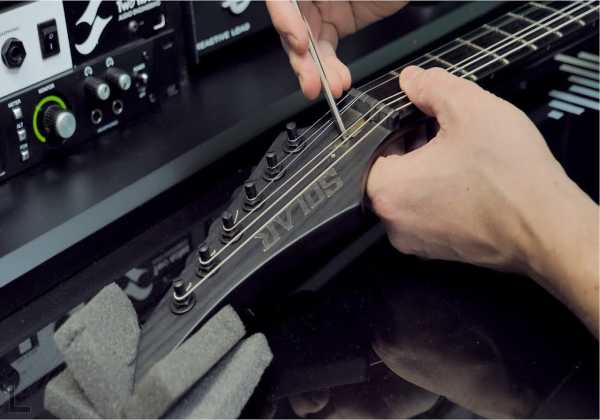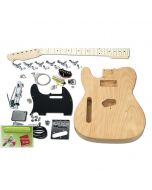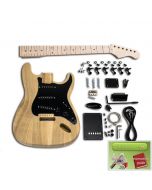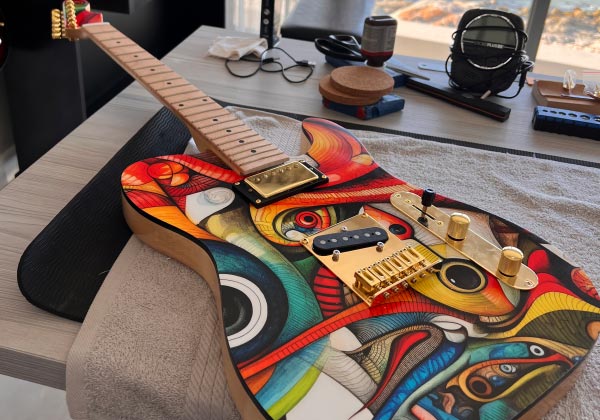
GUITAR ADJUSTMENTS: STRING ACTION & INTONATION
Are you prepared to embark on a journey that will redefine your guitar playing experience? The world of guitar adjustments holds the key to unlocking a realm of unparalleled musicality. In this comprehensive guide, we will delve deep into the essential aspects of string action and intonation adjustments, illuminating the path to achieving a flawless setup.
Understanding String Action and Intonation: The Heartbeat of Your Guitar
At the core of achieving optimal playability and impeccable tonality lies the mastery of two fundamental concepts: string action and intonation.
String Action: Visualize your guitar as a finely-tuned instrument, where the interplay between the strings and the fretboard is meticulously orchestrated. String action refers to the height of the strings above the frets. This critical dimension significantly impacts your playing experience. A lower string action facilitates effortless fretting and enables lightning-fast runs, making it a favorite among virtuoso players. On the other hand, a slightly higher string action enhances sustain, resonance, and minimizes unwanted buzz. By adjusting string action, you can customize your guitar to match your playing style, creating a symbiotic connection between you and your instrument.
Intonation: Imagine a scenario where the notes you play on different frets sound slightly out of tune, despite your meticulous tuning efforts. This phenomenon arises from imperfect intonation. Intonation is the fine-tuning process that ensures each string's pitch remains accurate all along the fretboard. Adjusting intonation involves altering the string's effective length, correcting discrepancies and harmonizing the entire spectrum of notes. Perfect intonation not only results in a harmonious blend of chords but also empowers soloists to create captivating melodies across the entire fretboard.
A Glimpse into the Adjustment Process
Embarking on the journey to achieving impeccable string action and intonation requires a nuanced understanding of the adjustment mechanisms at your disposal:
- Truss Rod: The truss rod allow to adjust both intonation and string action more localized in the center of the neck. Nestled within the neck of your guitar, is the primary player in managing the instrument's curvature. Adjusting the truss rod allows you to find the sweet spot between fretting ease and buzzing prevention. A slight tweak can make a world of difference, catering to your playing style and string gauge.
- Bridge Height Adjustment: Altering the height of the bridge is a powerful tool to influence string action. Raising the bridge saddles elevates the strings, creating more space between them and the frets. Lowering the saddles brings the strings closer to the frets, facilitating quicker, more precise playing. This adjustment demands a delicate balance between optimal playability and tonal resonance.
- Bridge positionning & Scale length: if you are installing your bridge. Scale length check is a must to make sure you have a correct intonation. So your bridge should be positionnning accoridng to the scale length of your guitar. This is the very first step to make sure you will have good intonation.
- Nut Adjustment: Adjusting the nut is a good way to increase or decrease your string action for the first frets. File or increase the nut height.
- Neck inclination: Before painting and building your gutiar you should always make a first build raw and check scale length and string action. Put the neck the bridge and the 2 E strings - at this stage you dont need to glue or fix the neck and see if your intonation is about right compared to what you are looking for. If you are above or below 2mm of what you expect you should adjust neck inclination. To do that you can either use shim or you can file the neck slightly to create yourself the inclination. For the later on do this step by step, you dont need a lot inclination to reduce or increase significantly the string action.
- Saddle Adjustment: Fine-tuning intonation involves adjusting the individual saddle positions at the bridge. Each saddle corresponds to a string, and by meticulously modifying their positions, you can ensure that each fret's note rings true and in harmony with the master tuning.
Elevate Your Musical Journey Today
In the pursuit of sonic excellence, the art of guitar adjustments for string action and intonation reigns supreme. Whether you're a seasoned performer seeking precision or an aspiring artist crafting your signature sound, mastering these adjustments can transform your playing experience.
 UK
UK FR
FR DE
DE IT
IT ES
ES







